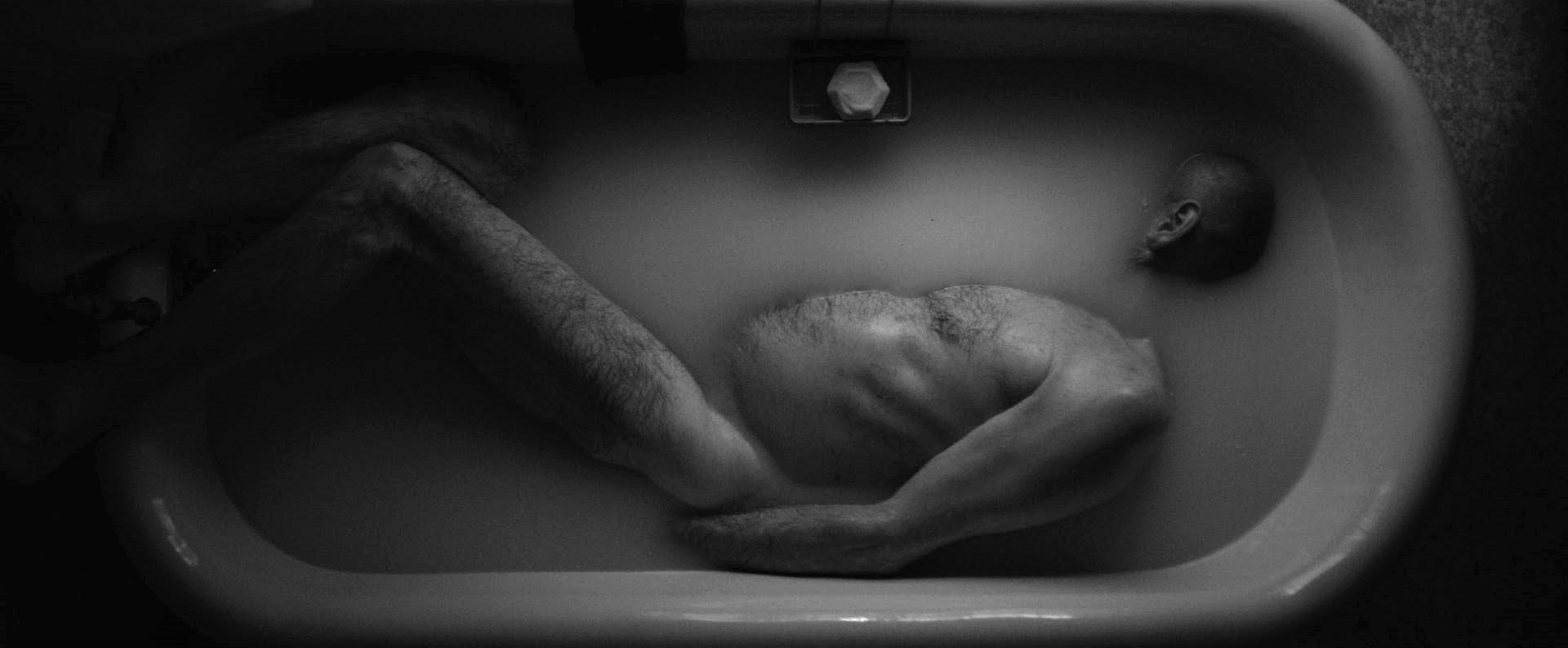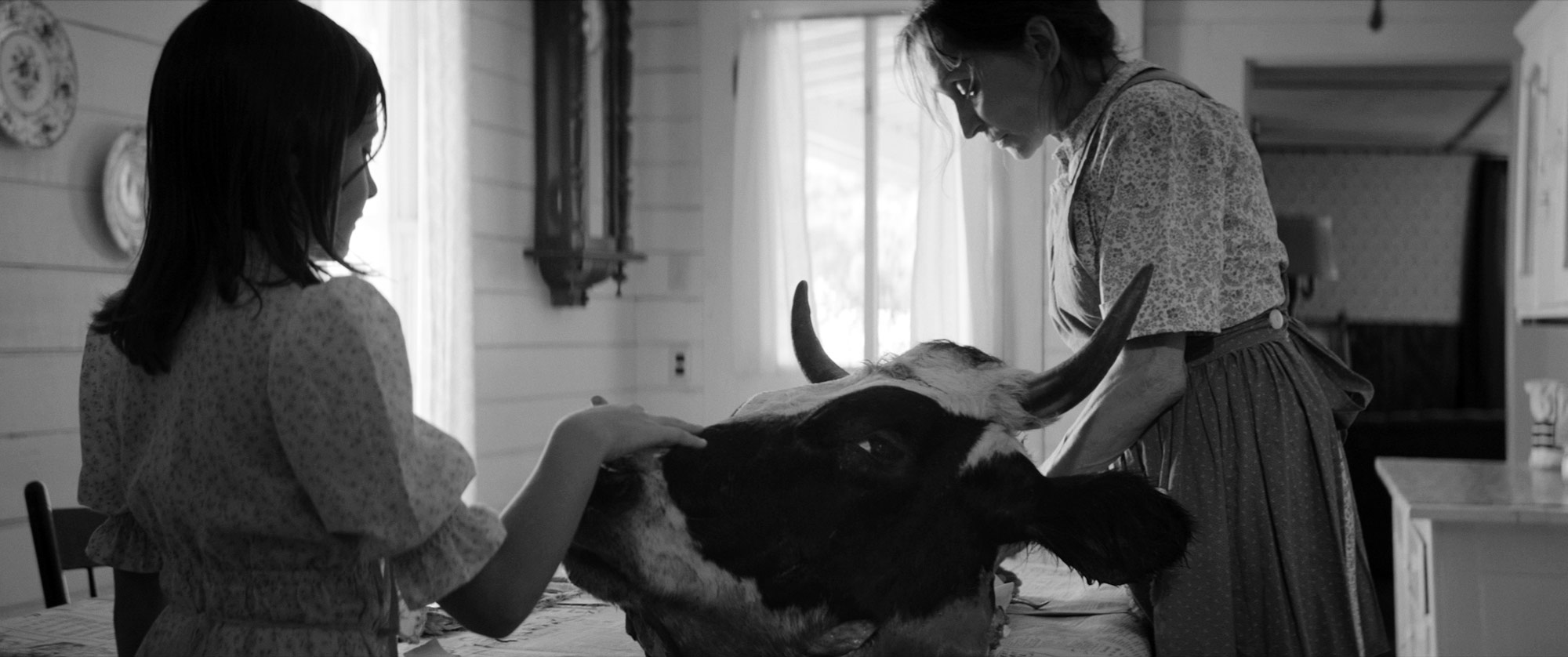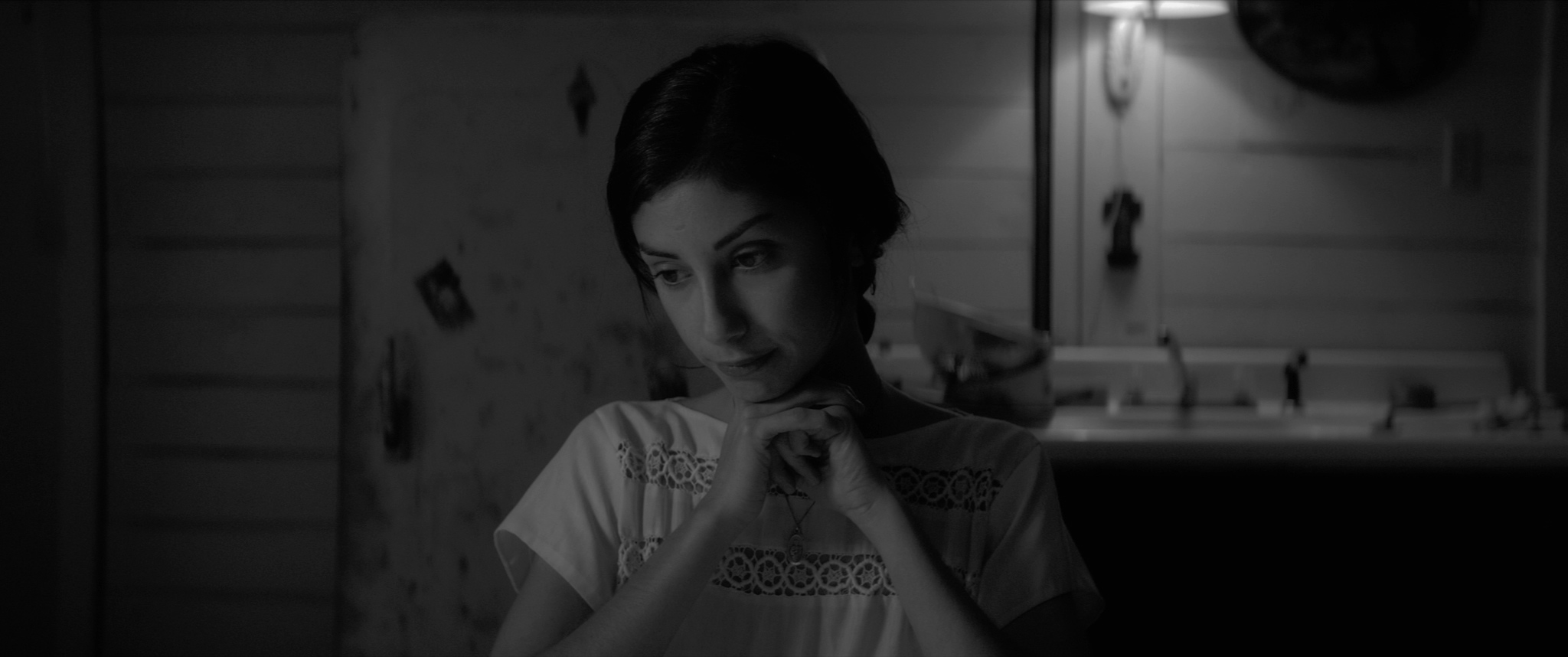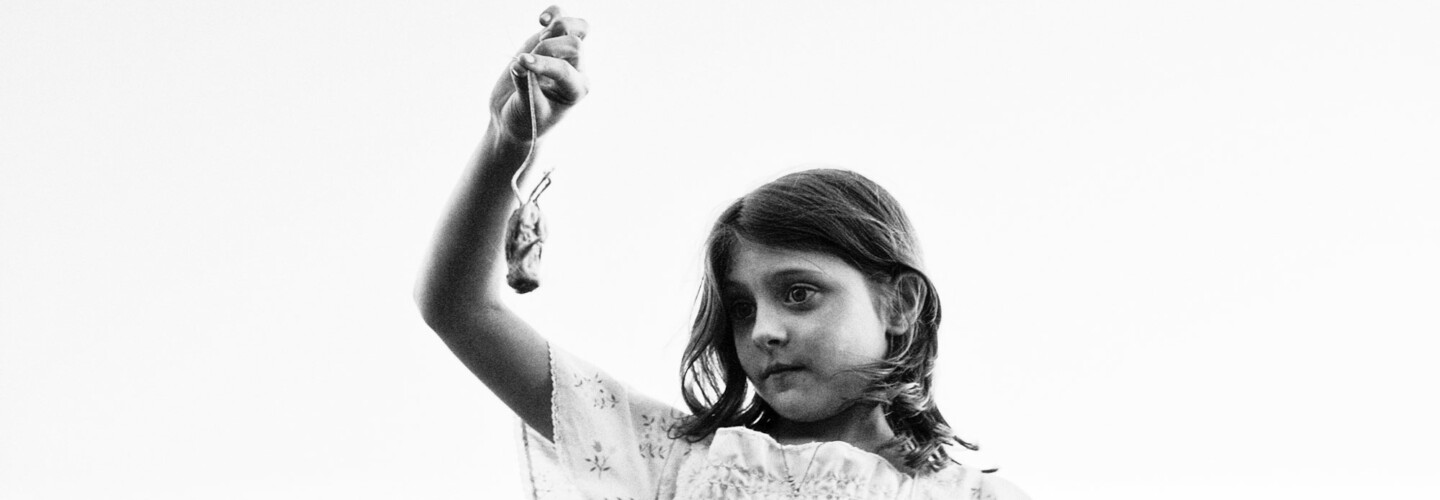
Mining the horrors of early childhood trauma to chilling effect, Nicolas Pesce’s debut feature The Eyes of My Mother sees a severely disturbed young woman seek out replacements for the missing familial love she desperately yearns for, whether the objects of her affections are willing or not. To mark The Eyes of My Mother’s UK cinema release, we revisit our podcast interview with Nicolas, in which he explains the advantages of shooting your feature twice and why his early career as a music video director was the perfect boot camp for making weird films.
What was it that drew you to filmmaking?
My dad was a fashion designer and did Broadway costumes. When I was younger my parents were very involved in theatre, so I grew up around all of that stuff. I think that what initially drew me to film is that it’s a wonderful mix of so many different mediums. There’s theatre, there’s photography, there’s music. As a person who is so drawn to all the aspects of it, filmmaking seemed like a way that I could draw, and be a musician, and be an actor, and get to play with all those energies without having to pigeonhole myself into one thing.
As I got more into it, I realized that what initially drew me to all of those mediums in the first place was being able to paint the world differently than it actually exists. As you could tell from my film I’m not a filmmaker who particularly values naturalism. I’m more focused on being stylish in terms of aesthetic and grounded in terms of performance. I think that filmmaking was a way of exploring another way to look at life and literally make the world look different than it actually does.
Prior to The Eyes of My Mother you directed a whole host of music videos, but didn’t really do much in the realm of shorts.
When I was in school at NYU I had made a couple of shorts and I made one short in particular that I was pretty proud of but was very odd. We shot on 16mm in a doctor’s office that hadn’t been updated since the 70s. It was this cool weird little genre thing. After graduating I knew I couldn’t bring myself to get a real job – I’m just not that kind of mind. I wanted to keep working and keep directing but shorts to me seemed like a way to do a lot of work and not make a lot of money, not that music videos make any money! But for about five years I was able to pay my New York City rent just hustling, doing something like four music videos a month.
I’m more focused on being stylish in terms of aesthetic and grounded in terms of performance.
What I liked about it was that the first few video jobs I got were all for people who had seen that weird short and were like, “Oh you make stuff that looks like it was made in the 70s. That’s cool, can you do that for us?” In the beginning, my music videos were a lot of Grindhouse, more aggressive, exploitation stuff. It was a very loud, genre-heavy style that when someone would call me up for a job they knew that I wasn’t going to make them a normal, bland video. They knew what they were getting into.
It really gave me an opportunity to direct a lot and do a lot of these really stylized pieces. See where I’d have to tone it down and where I could be more aggressive. I find there are a lot of music video directors whose movies feels like a long music video. Whereas for me, my videos never particularly felt like music videos. They always felt like shorts and it became a way for me to do really weird stuff that didn’t necessarily have to appeal to a large audience. It was really experimenting. Getting to play with all my tools and learn how to talk to crew and actors. It was like boot camp for making weird stuff. By the time I got to the movie, I had a better sense of, “This is too much, this isn’t enough”. It was really good practice to do it over and over and over again. Making my first movie felt like, “This is a breeze. I don’t have to do four of these this month“.

The majority of your feature crew were collaborators from those music video days weren’t they?
Totally! My DP shot every one of my music videos except for two that I shot myself. Literally, my whole crew on the movie was my crew that had come up doing music videos with me. There was a 20 person crew for my final film in film school and 16 people from that 20 person crew were on my feature and three of the four who no longer live in the country. So it was a real family affair. I’ve had such a shorthand with all these people for so long that the actual filmmaking part of it wasn’t necessarily even the most challenging aspect. The actual act of making the movie was very fun.
The challenges were the more abstract things that I wasn’t prepared for. You realize that filmmaking is a lot more about navigating interpersonal relationships. I had to learn that doing music videos and didn’t realize how much it would carry over. So much of filmmaking is just managing people, dealing with different personalities, different skill sets and finding a way to marry everyone together. Being the director is like being the dad of the family who gets everyone excited about the same thing no matter how different they are.
I read that the earlier drafts of the film were a lot more violent. What made you pull back from that for the final film, which isn’t actually as violent on screen as you come away thinking it is?
I think that even in the earlier drafts when I say it was more violent, it was more that there were more ‘instances’ of violence, but I was never going to show any of the violence. To me, there’s no make-up artist in the world who can do the horror that your own mind can. What I wanted to do with this film was force the audience to picture it themselves and do the work themselves and scare themselves, rather than giving them something that they could look away from. It becomes a way more interactive experience with the scares, forcing you to fill in the gaps and put all the pieces together.
So much of the film rests on your lead Kika Magalhães shoulders, how did you build that performance together?
A lot of it was Kika as a woman. She has very particular mannerisms, the way she holds herself, the way she carries herself. What you see in the film is very much her and that’s why I was drawn to her in the first place. So it was a lot about trying to maintain some of that naturalism in her performance, however odd and otherworldly it is.

This is the first feature to come out under the Borderline Presents label. How did you come to join the Borderline Films brotherhood?
Josh was working on his film James White and a friend of mine, who I had gone to school with, was working on the film and thought that Josh and I would get along and he was very right. We worked together in post on James White, playing around with the cut before he even had an editor locked down. We really enjoyed it and wanted to continue. Borderline were at a point in their careers where they wanted to foster younger filmmakers in who they saw similarities to themselves. I definitely connected with all of them in the types of movies that we like but more so, the types of characters that we’re drawn to.
I wanted it to feel like you were an innocent observer watching and you shouldn’t be!
I think what’s interesting, is that they all make such drastically different movies but the through line is these dark characters that you have really vulnerable sympathy for. Josh saw that in my story and realized that their model would very much work for my film. We had just gotten so close over the process of making James White that I felt like I was really a member of their family. They were there with me for every step of the process, bringing their experience to the film which was invaluable.
Did you have to fight for your decision to have The Eyes of My Mother be a black and white film?
Initially, in writing it in the very early stages I wasn’t necessarily thinking about it. It was actually a conversation that I had with Josh talking about the movies that I was inspired by and what we were trying to do with this movie, using the aesthetic to be a little bit more expressionistic, and that being an extension of the characters’ minds. We felt that the black and white made more sense for Francisca’s world than it being in color. Her world is not colorful and warm and vibrant, it’s cold and stark. Also doing it in black and white let us do things visually similar to the way I handle the violence off screen and there being this atmosphere that we don’t get in films post-noir era.
You pre-shot the film before principal photography, what freedoms did that bring to the actual shoot?
I think that in film there are so many variables when you’re shooting, to have as few variables as possible on the day is better. In being able to craft the whole film ahead of time and in seeing what worked and what didn’t, on the actual day there was a lot more opportunity for revelation and discovery because we weren’t figuring out where the camera was going to be or the blocking. We had already worked through all of that when we had more time. The nature of a movie like this is we’re shooting it really quick but beforehand you have a little bit more flexibility.
There’s a gorgeously choreographed shot where we’re really far back, looking through a window seeing an entire scene play out. Can you talk about putting that together and choreographing that action in a way that forces the audience to have our faces metaphorically pressed up against the window, trying to puzzle things out?
For the scene that you’re talking about, and other moments, to me the camera is another actor in the scene. So much of the cinematography of this film is very voyeuristic, particularly for the moments of violence. I wanted it to feel like you were an innocent observer watching and you shouldn’t be! Similarly to what I was saying before about making the audience more interactive in the scares, I think being that voyeur and trying to look and see what’s going on beyond the window makes it a more interactive, engrossing experience particularly in those darker moments.

The film has a weird dichotomy in which the scenes feel really relaxed yet the movie itself moves at quite a clip. How do you find that balance especially as you cut it in just three weeks in order to make Sundance?
The beauty of doing it so fast was there wasn’t any time to second guess ourselves. The editing room was very much a group effort with everyone putting in their input, trusting our instincts and collaborating to make it. It wasn’t this insulated experience where I went off and did my own thing and then came back and showed people. I continued to make the movie with the people that I had been making the movie with. It was very much a labor of love for all of us and three weeks later we looked at the cut we had and it was something that we were proud of. We continued to tweak it a little bit but we cut it very very fast and that’s more or less the movie that you see.
Can you elaborate on the functions of the chapters: Mother, Father and Family?
I want you to think about the relationship that you have with mother, father and family, and the relationship that she has with mother, father and family because I think that those are similar and different in scary ways for each individual person. To me, the movie is about loneliness and family, and each chapter focuses on a different aspect of those relationships.
It seems that there are no middle ground of reactions for this film, it’s either love it or hate it.
I knew that the movie would be polarizing and you know, that’s why we made it the way we did. I think what’s been nice is the movie tells you what it is within the first 10 minutes and from my experience if you’re not into that you leave. We always get walkouts which I love. I made the movie for a very specific audience and it’s found its way to that audience. The people who love it really love it and the people who hate it really hate it and I think that’s all you can ever ask for.


